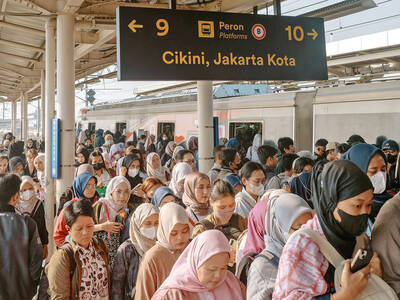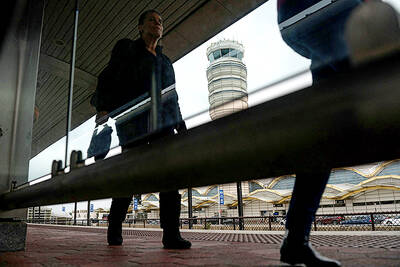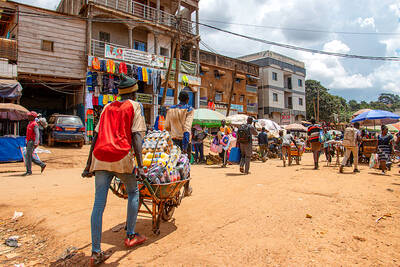A Google artificial intelligence (AI) system proved as good as expert radiologists at detecting women with breast cancer by screening mammograms and showed promise at reducing errors, researchers in the US and UK reported.
The study, published on Wednesday in the journal Nature, is the latest to show that AI has the potential to improve the accuracy of screening for breast cancer, which affects one in eight women globally.
Radiologists miss about 20 percent of breast cancers in mammograms, the American Cancer Society says, and half of all women who get the screenings over a 10-year period have a false positive result.
The findings of the study, developed with Alphabet Inc’s DeepMind AI unit, which merged with Google Health in September last year, represent a major advance in the potential for the early detection of breast cancer, said Mozziyar Etemadi, one of its coauthors from Northwestern Medicine in Chicago.
The team, which included researchers at Imperial College London and the UK’s National Health Service, trained the system to identify breast cancers on tens of thousands of mammograms.
They then compared the system’s performance with the actual results from a set of 25,856 mammograms from the UK and 3,097 from the US.
The study showed that the AI system could identify cancers with a similar degree of accuracy to expert radiologists, while reducing the number of false positive results by 5.7 percent in the US-based group and by 1.2 percent in the UK-based group.
It also cut the number of false negatives, where tests are wrongly classified as normal, by 9.4 percent in the US group and by 2.7 percent in the UK group.
The differences reflect the ways in which mammograms are read.
In the US, only one radiologist reads the results and the tests are done every one to two years. In the UK, the tests are done every three years and each is read by two radiologists. When they disagree, a third is consulted.
In a separate test, the group pitted the AI system against six radiologists and found it outperformed them at accurately detecting breast cancers.
Connie Lehman, head of the breast imaging department at Harvard Medical School’s Massachusetts General Hospital, said the results were in line with findings from several groups using AI to improve cancer detection in mammograms, including her own work.
The notion of using computers to improve cancer diagnostics is decades old and computer-aided detection (CAD) systems are commonplace in mammography clinics, yet CAD programs have not improved performance in clinical practice.
The issue is that CAD programs are trained to identify things human radiologists can see, whereas with AI, computers learn to spot cancers based on the actual results of thousands of mammograms, Lehman said.
That has the potential to “exceed human capacity to identify subtle cues that the human eye and brain aren’t able to perceive,” Lehman added.
Although computers have not been “super helpful” so far, “what we’ve shown at least in tens of thousands of mammograms is the tool can actually make a very well-informed decision,” Etemadi said.
However, the study has some limitations.
Most of the tests were done using the same type of imaging equipment and the US group contained a lot of patients with confirmed breast cancers.
Crucially, the team has yet to show the tool improves patient care, said Lisa Watanabe, chief medical officer of CureMetrix, whose AI mammogram program won US approval last year.
“AI software is only helpful if it actually moves the dial for the radiologist,” she said.
Etemadi agreed that those studies are needed, as is regulatory approval, a process that could take several years.

FRUSTRATIONS: One in seven youths in China and Indonesia are unemployed, and many in the region are stuck in low-productivity jobs, the World Bank said Young people across Asia are struggling to find good jobs, with many stuck in low-productivity work that the World Bank said could strain social stability as frustrations fuel a global wave of youth-led protests. The bank highlighted a persistent gap between younger and more experienced workers across several Asian economies in a regional economic update released yesterday, noting that one in seven young people in China and Indonesia are unemployed. The share of people now vulnerable to falling into poverty is now larger than the middle class in most countries, it said. “The employment rate is generally high, but the young struggle to

ENERGY SHIFT: A report by Ember suggests it is possible for the world to wean off polluting sources of power, such as coal and gas, even as demand for electricity surges Worldwide solar and wind power generation has outpaced electricity demand this year, and for the first time on record, renewable energies combined generated more power than coal, a new analysis said. Global solar generation grew by a record 31 percent in the first half of the year, while wind generation grew 7.7 percent, according to the report by the energy think tank Ember, which was released after midnight yesterday. Solar and wind generation combined grew by more than 400 terawatt hours, which was more than the increase in overall global demand during the same period, it said. The findings suggest it is

IN THE AIR: With no compromise on the budget in sight, more air traffic controllers are calling in sick, which has led to an estimated 13,000 flight delays, the FAA said Concerns over flight delays and missed paychecks due to the US government shutdown escalated on Wednesday, as senators rejected yet another bid to end the standoff. Democrats voted for a sixth time to block a Republican stopgap funding measure to reopen government departments, keeping much of the federal workforce home or working without pay. With the shutdown in its eighth day, lines at airports were expected to grow amid increased absenteeism among security and safety staff at some of the country’s busiest hubs. Air traffic controllers — seen as “essential” public servants — are kept at work during government shutdowns, but higher numbers

Elvis Nghobo tried to get into four different professional schools in Cameroon, but could not make it. Frustrated, the 34-year-old turned to selling food at a market in Yaounde, the country’s seat of power. Nghobo blames his woes on what he calls a corrupt education system that favors children of the elite. As the central African country prepares for Sunday’s presidential election, he said he would not be heading out to vote. He called the results a foregone conclusion for 92-year-old Paul Biya, the world’s oldest president, who has ruled for Nghobo’s entire life. “He is already too old to govern, and it’s boring